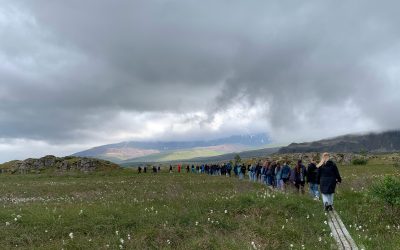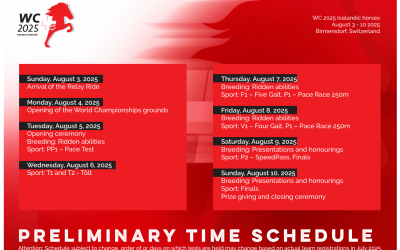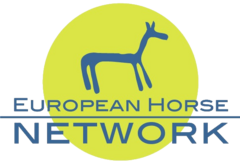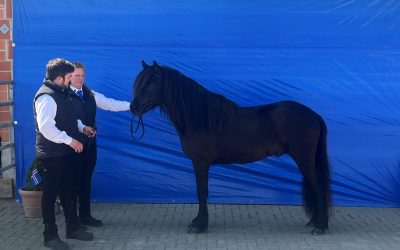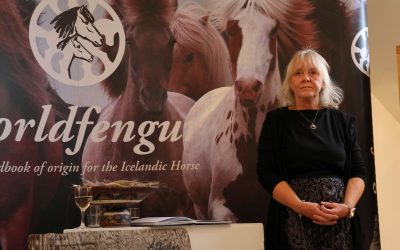
Photo: G.M.Sharman
Riding Icelandic Horses…
The Icelandic horse offers a challenging riding experience for adults and children, and requires the highest standards of horsemanship in riding the five gaits; walk, trot, canter, tölt and flying pace (skeið) in nature, at competitions and in breeding shows.
As a riding horse it is extraordinarily versatile – a capable, willing horse for pleasure riding, and for sport competitions, suitable for adults and children. The horse is tough, independent, yet sociable and easy to get on with, is self-assured and has good staying power.
The aspiration to promote the Icelandic horse to its full potential is at the heart of FEIF’s vision and mission.
….. as leisure rider
The majority of the Icelandic horse riders in FEIF member associations are leisure riders. The variety of activities ranges from riding lessons and clinics, to trail riding and occasional participation in competitions.
FEIF offers a platform for an international exchange of ideas, for learning from each other, and how to reach out to riders who are not connected
to any national Iceland horse association.
Securing a continued interest in leisure riding among a broad base of leisure riders is of paramount importance for the future of both breeding and competing. It is part of the communication about leisure riding that riding is joyful for all, regardless of gender, race, age and ability – and also, that good and harmonious riding at the same time is essential.
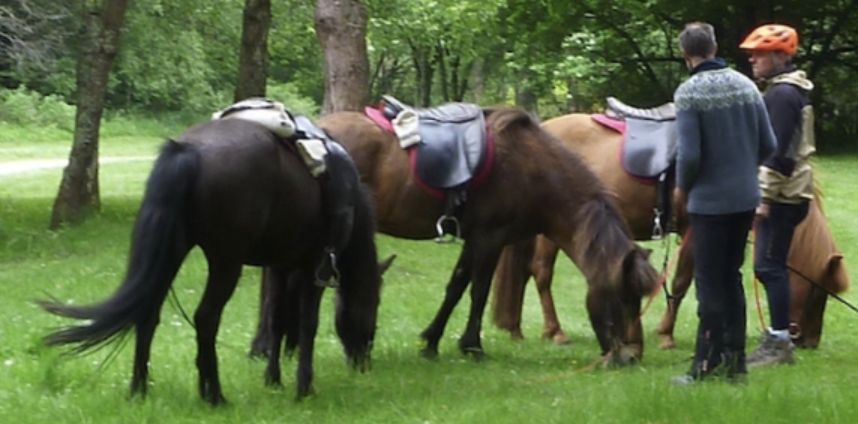

Photo: Peter Niess
…at sport events
At sport events the Icelandic horse is ridden on the oval track and there are gaited tests in tölt, four gait (walk, trot, canter, tölt) and five gait (walk, trot, canter, tölt and pace). The performance of horse and rider is judged, mainly through the quality of the gaits. In tölt, an even four-beat gait without suspension is required, one or two feet on the ground at any single moment. Pace should have a clear moment of suspension but can have a visible four beat characteristic because of the action of the front legs. It should be ridden at racing speed.
On (straight) pace tracks races in pace (both with flying start and start from start boxes) take place. The pace track is also used for the pace test, a test focussing on the combination of the quality of the gait and the speed.
Other tests emphasize other qualities of horse and rider, like flag race, trail, cross country, in hand showing and free style performance.
… or present breeding horses
At a breeding show, the first part is called conformation. The conformation should be functional and promote the health and durability of the horse where carrying ability, natural gaiting ability and the capacity to move under a rider in balance and correct body function are paramount. The conformation should also be characterized by beauty and attractive appearance with an emphasis on strength and muscularity.
The ridden ability part shall show a quality gaited horse that has a natural ability to carry a rider in balance, self-carriage and is beautiful when ridden, a horse that is agile, sure-footed and with good stamina – a true Icelandic gæðingur.
The main goal with regards to the gaiting ability is that the gaits have correct beat and body function, the horse is moving freely in an even rhythm. The gaits should moreover possess suppleness, lightness, long strides and speed capacity.

Photo: Kristín Halldorsdóttir
Related news
FYCamp 2025 – Day 3
How often do you try to reach for your left foot with your right hand when sitting in the saddle? That - and many other seat exercises - were practised by the participants on day three of the 2025 FEIF Youth Camp in Iceland finally getting on a horse under the...
FYCamp 2025 – Day 2
A sense of place, a sense of self and a sense of others: the first full day of the FEIF Youth Camp 2025 started with an introduction of the programmes offered by the Agricultural University of Hvanneyri, a small institution with a proud history. This was followed by...
FYCamp 2025 has started!
They have arrived! The participants of the FEIF Youth Camp 2025 have arrived in Hvanneyri, one of Iceland’s two universities that offer equine studies. Over 30 young people aged 14-17, from 11 FEIF member countries have come together for a week of horse related...
Preliminary Time Schedule out for WC 2025 in Birmenstorf CH
In 42 days, the 2025 Icelandic Horse World Championships will take place in Birmenstorf, Aargau. Around 200 riding pairs from 19 nations will compete in various disciplines from sport and breeding to win one of the 18 coveted world championship titles. A total of over...
EHN Foresight Study: looking forward towards 2040
The European Horse Network (EHN) started a process with its 34 members to generate scenarios of the future. They are only thought experiments about possible future developments and possible impact for the horse industry. The four scenarios were created around two...
Breeding Shows 2025
This year, breeding shows are taking place in 9 different FEIF-countries and they are currently in full swing.The earliest breeding shows started in Germany in the beginning of april (only confirmation) and the last one will be in Denmark in the beginning of...
The Icelandic Horse History Centre opens its doors again this summer
A new exhibition was opened at the Icelandic Horse History Centre on June 1st. Visitors are invited to learn about Icelandic horse colours and the studbook WorldFengur, as well as to explore a variety of fascinating objects connected to outstanding horses and riders....
World Championships 2029
We are all talking and training and working for the World Championships 2025 in Birmenstorf, Switzerland, where we hope to meet all of you! Preparations for the World Championships 2027 in Germany, Rieden, already started! Nevertheless, FEIF needs to prepare for the...
Blood mare industry in Iceland
As you may be aware about 4000 pregnant mares in Iceland are used for the production of PSMG, a fertility hormone that is mainly used in pigs in Europe. Animal welfare groups within Iceland and abroad have been protesting against this practice for several years now,...

